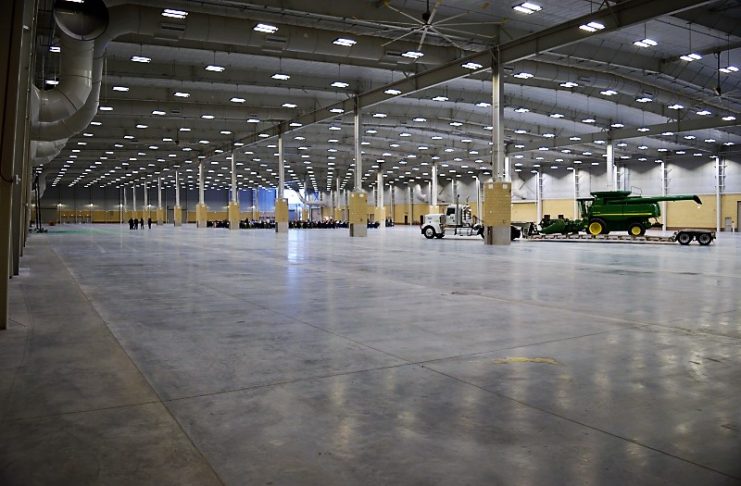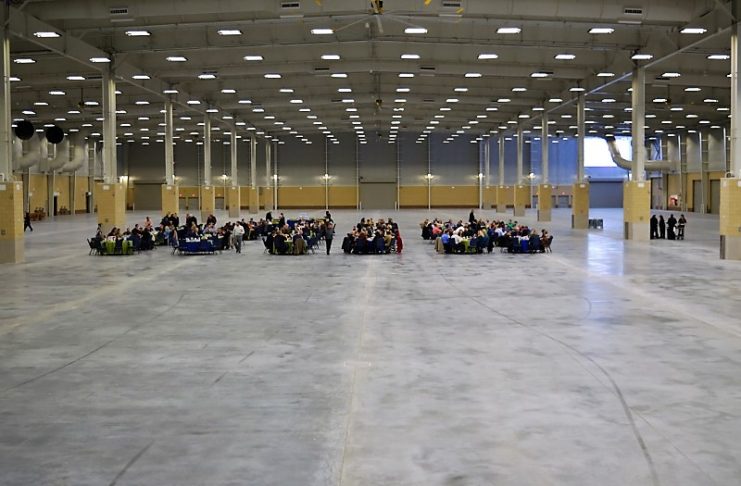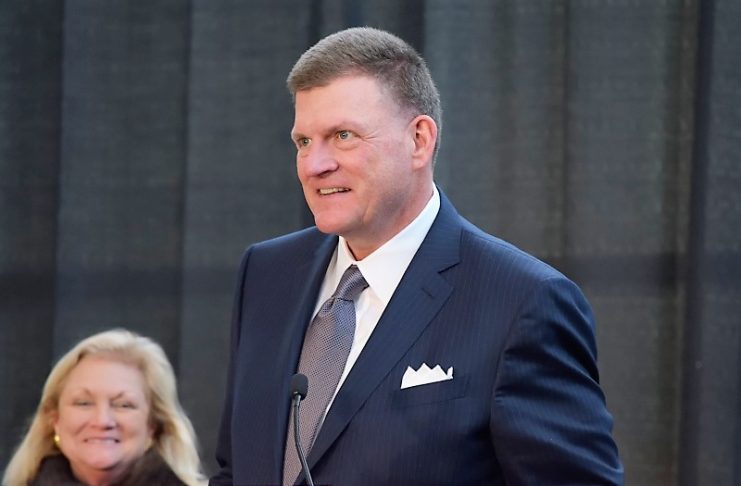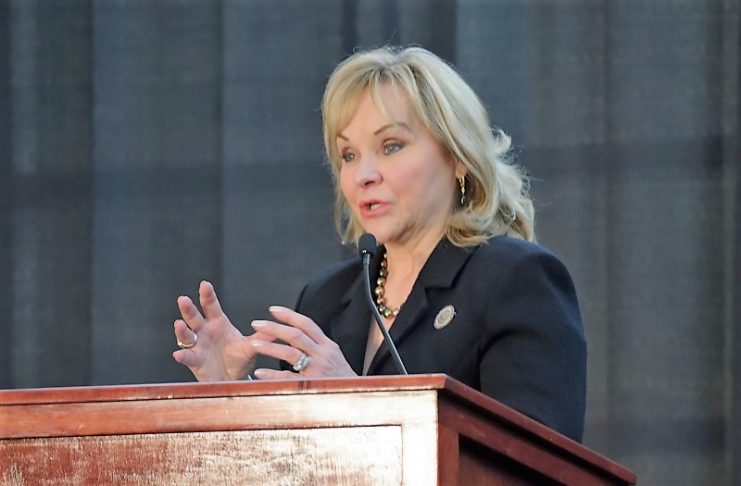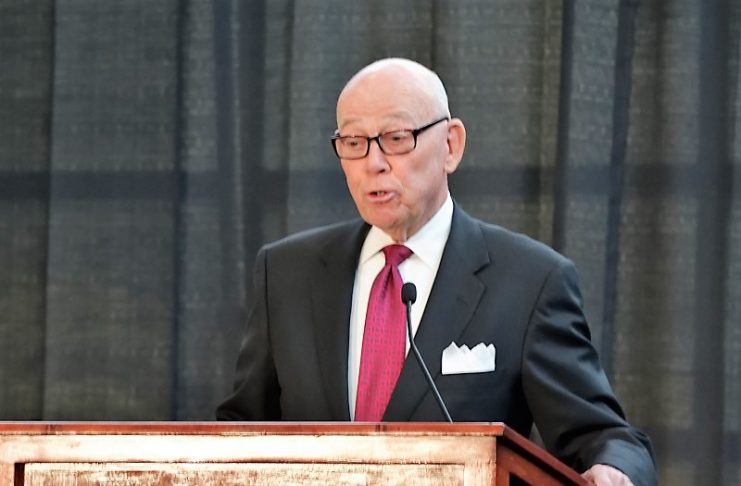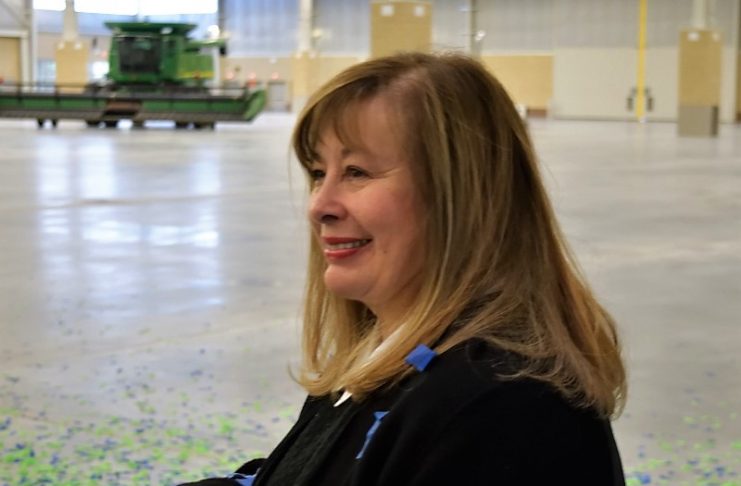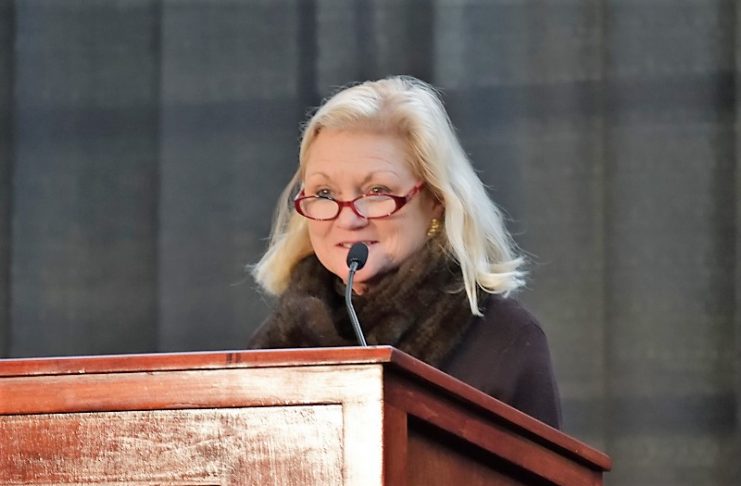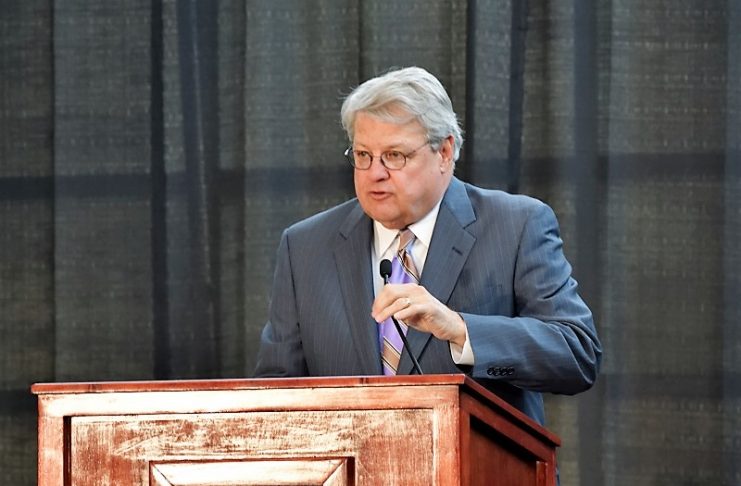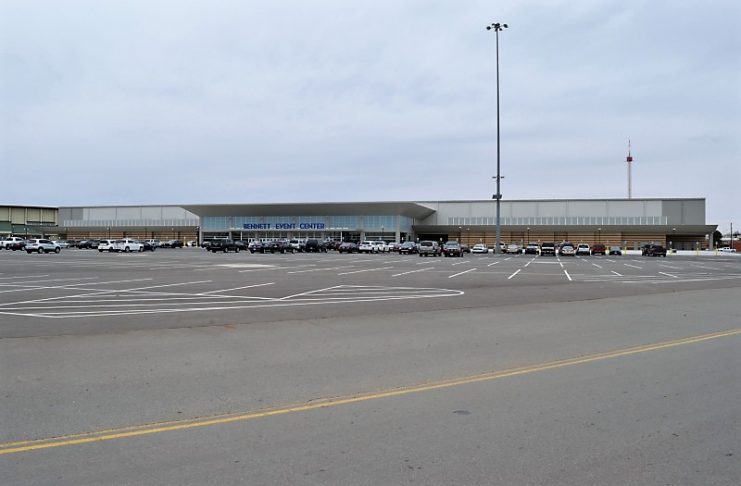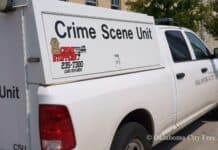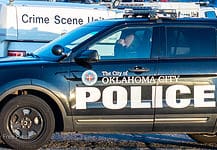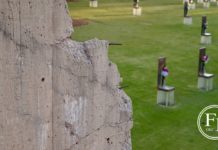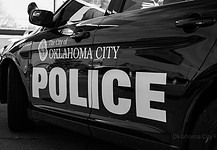Last Updated on January 6, 2017, 1:10 AM | Published: January 6, 2017
For two years visitors to the Oklahoma State Fair have walked out around construction of a large building about one block long. It took longer to complete than anticipated.
The Bennett Event Center opened Tuesday 11 months behind schedule, but was paid-for in cash with MAPS 3 funds.
It was completed within the $58.7 million budget.
With this one building alone, 279,000 square feet of show space has been added to State Fair Park, putting the unique site into a much stronger position for attracting more and bigger year-round events.
Ribbon-cutting
Today the ribbon-cutting ceremony included Governor Mary Fallin, Oklahoma City Mayor Mick Cornett, Oklahoma City Ward 6 Councilwoman Meg Salyer, MAPS 3 Citizens Advisory Board Chairman Tom McDaniel, and Clay Bennett, for whom the building is named.
Bennett has spent more than 30 years on the Oklahoma State Fair board of directors. He was chair of the organization for 14 years.
Each dignitary took turns praising the new addition to State Fair Park as a further expansion of the site as a year-round facility.
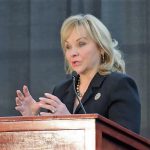
Fallin complimented the City of Oklahoma City for its wise use of funds and its further development of State Fair Park. The land and facilities belong to the city. She also complimented Mayor Cornett for his leadership.
Cornett said that with the addition of the new building, projections are for the entire park to have an economic impact of $136 million.
Salyer pointed out that Oklahoma City “does something extraordinary with development, we don’t spend money from the penny sales tax until we actually get those pennies in.” She emphasized that few cities could see such a project completed having been already paid for.
Bennett marveled at the “extraordinary vision” of the early city leaders who developed “this agricultural, exhibition, fair Mecca right in the middle of a large, American city.”
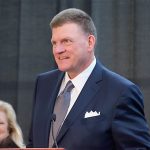
“The park – the land – this doesn’t exist anywhere else in the country,” he told a crowd of about 200 who were gathered for today’s event.
“The horse shows have perhaps become one of the most important economic drivers in the city,” he said. “We have the best shows for the best breeds. We have the finest horse show facilities in the world.”
Oversight
Tom McDaniel and Dee Morales, co-chairs of the MAPS 3 Citizens Advisory Board both praised the building and the process that brought it into being.
McDaniel told those gathered for the ceremony that the building came about through hard work of the city staff, professionals on the construction, and citizens on the advisory board “who gave of their time to see this project through.”
“We’re here to make sure that the citizens of Oklahoma City get their money’s worth,” Morales told Free Press after the ceremony. “We were a part of the process every step of the way, but more to provide oversight and approval.”
Morales described the committee members as being “very disappointed that it wasn’t opening when originally scheduled, but we are very happy that it came in under budget.”
Immediate use
No time is being wasted in using the new facility. The annual Home and Garden Show will be the first to use it this Jan. 20-22.
The building’s nearly 6 acres of contiguous space is designed to accommodate the largest items like boats at the boat show and combines at the farm show. Previously some of the largest items at those shows would have to sit outside. Now the entire show can be inside if inclement weather is anticipated.
What locals call “the state fairgrounds” is actually named State Fair Park. It has 440 acres of land and facilities sitting between I-44, N. May Avenue, NW 10th Street and Reno.
State Fair Park hosts some of the biggest horse shows in the world as well as the State Fair of Oklahoma and various trade shows throughout the year.
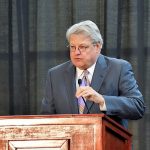
Tim O’Toole is the president and CEO of the not-for-profit corporation that operates the park, Oklahoma State Fair, Inc. He said he has been with the organization for 14 years.
He told Free Press that in construction “things don’t always go the way they are supposed to go.”
The delays were eventually worked out “between the MAPS office, the architects and the [general] contractor,” O’Toole said. “And, the MAPS process is an important process, and it’s an oversight process, but it can sometimes become a cumbersome process, too as far as changes moving through the process.”
He said that since it involves public funds, “there’s a tremendous amount of oversight, and obviously, eventually the city council is the final authority on everything.”
History
O’Toole pointed out that the State Fair of Oklahoma is even older than the state. The first state fair was held one month before Oklahoma was declared a state in 1907.
The original fairgrounds sat on roughly a square mile on the east side of Oklahoma City near today’s NE eighth Street and Martin Luther King Avenue.
In 1951 the State Fair acquired the current 440 acres. The first State Fair on the current site was held in 1954.
Oklahoma City’s development didn’t reach much further west than May Avenue at that time. But because of growth since, State Fair Park is thought of as near the center of the metro area.
Founder, publisher, and editor of Oklahoma City Free Press. Brett continues to contribute reports and photography to this site as he runs the business.



